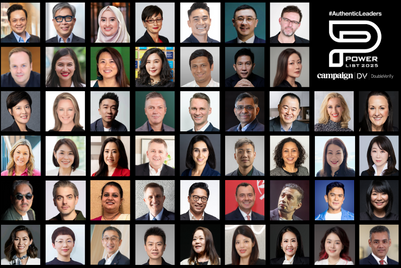
| PARTNER CONTENT |
As the communications landscape grows even more complex, the demand for clarity, authenticity, and human connection is reaching new heights. That was the ongoing message at the recent Brands in Motion dinner and panel event hosted in partnership by Campaign Asia-Pacific and We. Communications. Held in Singapore, the gathering brought together senior communications leaders to unpack the findings of We. Communications’ 2025 Brands in Motion report and reflect on what it takes to lead through complexity in a region as diverse as Asia Pacific.
Moderated by Campaign Asia-Pacific’s Editorial Director Robert Sawatzky, the panel featured Allison Lim, Global Public Policy, Alliance to End Plastic Waste, Prerna Suri, VP of Communications (Asia and Middle East), Sony Music, Susan Prakasam, Senior Analyst Relations Manager, Microsoft and Stephen Robertson, Managing Director, Singapore, We. The evening began with a presentation by Nitin Mantri, President of Asia-Pacific at We., who offered a deep dive into the latest Brands in Motion research. Conducted in partnership with Ipsos, the study surveyed both business decision-makers and full-time executives across seven markets, shedding light on the gap between communicators’ self-perception and audience expectations.
The complexity conundrum
Although the data revealed that complexity is inescapable, as communicators, the way to manoeuvre around these complexities is vital. From the proliferation of AI and digital channels to shifting societal expectations, the pressure on brands to communicate with both speed and depth is higher than ever. In APAC specifically, 52% of communicators cited AI as a key driver of complexity, higher than the global average.”
“APAC communicators are among the least likely to believe that things have stayed the same,” noted Mantri. “Only 8% said communications complexity hasn’t increased compared to 11% in North America and 16% in Europe.”
The research revealed a communicator-audience disconnect. Communicators believe they’re getting through, but the message isn’t landing well with audiences. While 84% of APAC communicators rated themselves highly in day-to-day effectiveness, only 64% felt confident handling complexity. Audiences were even more critical with just 38% agreeing their organisations excel at communicating through complex issues.
Bridging the audience gap
So what’s the solution? According to We.’s findings, it comes down to three strategies: humanise the message, lead with clarity not certainty, and put a face, not just a logo, on communications.
Allison Lim offered a public policy perspective from the Alliance to End Plastic Waste. Operating in underserved regions with limited infrastructure, her challenge lies in simplifying deeply technical work for time-poor policy makers.
“We’re communicating to people who often have no idea what goes into waste management,” said Lim. “So the actions need to be the communications. We don’t sugarcoat or overpromise, instead we iterate, we simplify, and we stay honest.”
Susan Prakasam echoed the need for clarity in her work with analysts at Microsoft. “We’re often saying the same things as our competitors: security by design, resilient systems. So how do we stand out?” Her answer: communicate purpose beyond product, showcasing social impact, sustainability, and values as business differentiators. “It’s not just what you say, but what you show,” she added.
For Prerna Suri, who brings years of leadership experience across journalism and big tech to her current role at Sony Music, storytelling and transparency remain core to bridging the gap. “You can have all the right people in the room, be it journalists, influencers or changemakers and still be disappointed with engagement,” she said. “The key is to humanise. your communications whilst using technology responsibly and authentically. At our very core, we are drawn to strong stories of communities where our experiences are understood and empathised with. That’s how we are wired as humans.”
AI: tool or trap?
Artificial intelligence naturally took centre stage during the conversation. While most panellists acknowledged its role in boosting productivity from drafting newsletters, summarising meetings and transcribing interviews but the consensus remained clear: it can assist, but not replace.
“AI can get you to the starting line faster,” said Robertson, “but you’re still the last author. The insight, the empathy, this needs a human.”
Lim agreed, adding that AI still struggles with nuance in policy communications. “It can’t read the political landscape or tailor engagement by municipality. That’s where communicators matter most.” Even Prakasam, representing Microsoft, cautioned against overreliance. “The value comes from how you direct it. Garbage in, garbage out. Prompt engineering is as much an art as it is a science.”
As the panel wounded down, the conversation returned to the power of human stories. Referencing the Amazon campaign where packaging was upcycled into foldable beds for pilgrims, Suri highlighted how a single narrative transcended: “What I remember isn’t 864,000 hours of sleep as described in the campaign. It’s the 106-year-old woman who got a bed to sleep in that night. That’s the power of storytelling in communications.”
This, ultimately, is the core message from We.’s research and the evening itself. Amid complexity, the brands that thrive won’t be those that shout the loudest, but those that speak with empathy, purpose, and clarity and those who commit to these factors through their actions.
Because in a world of endless noise, audiences are no longer tuning in to perfection. They’re listening for the hymns of humanity.


.jpg&h=334&w=500&q=100&v=20250320&c=1)



.png&h=334&w=500&q=100&v=20250320&c=1)

.png&h=334&w=500&q=100&v=20250320&c=1)

.png&h=334&w=500&q=100&v=20250320&c=1)








.jpg&h=268&w=401&q=100&v=20250320&c=1)